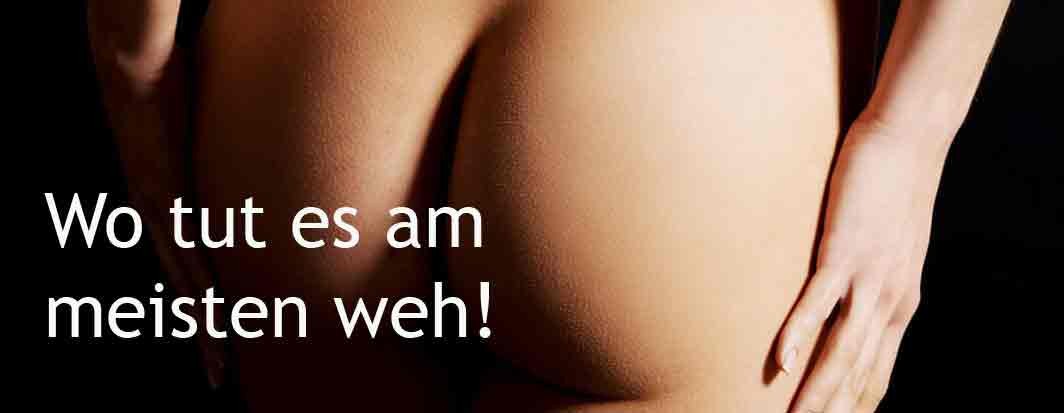Anal haematoma
Definition
The term anal thrombosis we call a very painful hardening on the anus. This is a sudden thrombosis – rather than an intravascular coagulation – in the hemorrhoidal edge veins, which are called outside the anus as perianale and inside as anal thrombosis. The nodes can reach lentil to pigeon size. Often a pronounced swelling (edema) is added. Sometimes there are several thrombi compartmented in one nodule (chambered thrombosis).
Frequency
Exact numbers are not available. However, anal thrombosis is relatively common, especially in middle-aged adults with about 5% of proctologic patients. On average, about 5-6 patients are treated with it on a daily basis.
Aetiopathogenesis
Anal border thromboses are formed within 2-3 hours not infrequently after consumption of spicy foods, concentrated alcoholics, coughing, lifting, pressing, in women just before menstruation, in the final stages of pregnancy and the birth process,
Other triggering factors may include cold (eg sitting on cold surfaces) and humid weather (hair dryer), (unusual) physical exertion, such as jogging, cycling, etc. Increased intra-abdominal pressure (diarrhea) can trigger thrombosis as well as mechanical factors ( proctological interventions, anal manipulation and traffic).
Symptoms
As a rule, patients complain of an acute – within minutes to hours – painful swelling on the anal margin or anus that has been accompanied by itching, stinging, burning or a strong feeling of tightness or pressure pain.
During the inspection and the digital examination, at the anal margin or in the anal canal, there are bounce-like to bright, bluish-red nodules of colored pinhead to plum size; occasionally multiple small thromboses are perlschnurartig next to, behind or arranged below each other. Often, the diagnosis can only be made with palpation, as a concomitant edema of varying thickness conceals the actual findings. The fresh thrombosis does not bleed.
Diagnostics
The diagnosis is carried out by means of inspection and palpation. On examination an anal haematoma usually shows as a rounded swelling at the anal orifice. Only thrombi located deeper in the anal canal require the use of a speculum or an open-front proctoscope.
Differential diagnosis
In differential diagnosis, other tumours, e.g. piles, abscesses, thrombosed hemorrhoids, anal fibroma, melanoma and anal carcinoma should be excluded.
Subsequent Course
Untreated, spontaneous resolution occurs in most cases with gradual subsidence of the pain and diminution of the swelling, sometimes after months, without the formation of skin tags. Eventually after several weeks the swelling may be completely absorbed, but often a residual loose tag of skin remains. Rupture of the haematoma sometimes occurs. This may be followed by complete or partial extrusion of the clot, but more often this sticks in a partially extruded condition and has to be digitally expressed. If the clot remains exposed or sometimes even if completely evacuated, infection is liable to occur with resulting abscess or fistula formation.
Treatment
Treatment depends on the time of onset and the patient’s distress, it may be expectant or by operation.
If, in the very earliest stages of an attack of prolapse and thrombosis, the prolapsed piles were to be released from the grip of the sphincter muscles by being reduced under a short general anaesthetic, it is just conceivable that the whole process of thrombosis might be aborted as claimed by some authors. But, by the time the average case reaches the clinic, the thrombosis is well established, and the swollen piles are quite irreducible. The choice of treatment then rests between strictly conservative management and immediate haemorrhoidectomy.
If the symptoms are only mild or are inproving, either no or only a conservative treatment is necessary. Expectant treatment is based on the experience that the majority of anal haematomas soon become painless and are usually absorbed without incident. Conservative treatment is designed to assist this process. It is an advantage if the patient can be confined to bed or be laid up for the greater part of the day for two or three days when the pain is severe, but this is sometimes not practicable for economic reasons. Frequent hot baths will be found very soothing, and analgesics may be prescribed as required. Stool motions should be kept soft by mild laxatives. We recommend first Sitz- or hot bath with, for example Kamillosan, Mesazalin suppositories (eg Claversal, Colofac), systemic administration of a flavonoid (eg Daflon, Antistax), a non-steroidal anti-inflammatory drug (eg Ibuprofen) or the local application of a heparin cream (eg Hirudoid, Vetren), possibly a corticosteroid (eg Scheriproct) or a superficially effective lidocaine (eg xylocaine gel) reduce the pain after 2 to 3 days.
Within three or four days the more severe pain usually subsides, the patient may then be able to return to non-strenuous work which does not involve prolonged sitting. Rarely, the discomfort may persist unabated or may be so severe when the patient first presents that he is unwilling to accept conservative treatment. In either event operation will be required. Since they are not prolapsed hemorrhoidal nodules, a manual retraction is pointless and therefore not indicated. Rarely, thrombosis can evolve in permanent fibrotic skin tags.
For very painful anal haematomas, an operative procedure is justified. There are two approaches: First, the incision and expression of the thrombus, possibly with the creation of a drainage area, and second, the excision of the entire thrombus area with the removal of the affected vessel segment. The excision minimizes the risk of postoperative rethrombosis. Both procedures are possible in local anesthesia in the outpatient department. The wound pain is usually less than the thrombosis caused by stretching or pressure pain. The later the patient presents, the less likely the indication becomes surgery. The wounds are not sewn up and left to secondary healing.
Complications
Complications are extremely rare in the literature as bleeding, inflammation and anal fissure, anal stenosis and continence problems are reported as below 1%. Only one urinary retention, especially in elderly patients, can occur in 10%, whereby a significant reduction of this postoperative complication can be achieved by a restrictive perioperative fluid intake.
Decisive for treatment results are careful patient selection as well as adequately performed surgical technique with maximum protection of the anal sphincter and anoderm and thus the continence performance.
Reccurence prevention
Postoperatively after healing, a sigmoidoscopy and an optional barronligatur of the residual hemorrhoids should be performed
Complications
The complications reported in the literature are bleeding, inflammation and anal fissure, anal stenosis and continence problems below 3%. Only one urinary retention, especially in elderly patients, can occur in 10%, whereby a significant reduction of this postoperative complication can be achieved by a restrictive perioperative fluid intake.
Decisive for treatment results are careful patient selection as well as adequately performed surgical technique with maximum protection of the anal sphincter and anoderm and thus the continence performance.

